Thomas Schütz
A Practitioners Guide to GitOps - Introduction, Principles and Implementation
#1about 3 minutes
The limitations of imperative configuration commands
Imperative commands are difficult to manage because they require correct execution order, are hard to script, and can become outdated.
#2about 2 minutes
Shifting from imperative to declarative configuration
Declarative configuration allows you to describe the desired state in a readable format like YAML, while controllers handle the implementation details.
#3about 4 minutes
Challenges of manually applying declarative configurations
Manually applying configurations with tools like kubectl apply can lead to configuration drift, security risks, and deploying untested changes.
#4about 4 minutes
Understanding the four core principles of GitOps
GitOps is built on four principles: a declaratively expressed desired state, automated pulling of configuration, immutable version history, and continuous reconciliation.
#5about 7 minutes
How the GitOps controller pattern works
A GitOps controller continuously compares the desired state in a Git repository with the current system state and applies changes to reconcile any differences.
#6about 5 minutes
Introducing Keptn for application lifecycle management
Keptn is a CNCF sandbox project that acts as a control plane for application delivery, quality gates, and remediation, making it a candidate for a GitOps approach.
#7about 7 minutes
A practical demonstration of GitOps with Keptn
A live demo shows how Keptn uses custom resource definitions (CRDs) and an operator to manage projects, services, and deployments from a Git repository.
#8about 3 minutes
Recap and call for community contributions
The GitOps implementation for Keptn is a work in progress, and community contributions for new ideas and code are welcome.
#9about 9 minutes
Q&A on career, Dynatrace, and Keptn specifics
The speaker discusses their career path from systems administrator to cloud automation, working at Dynatrace, and how Keptn compares to tools like Argo CD.
Related jobs
Jobs that call for the skills explored in this talk.
Matching moments
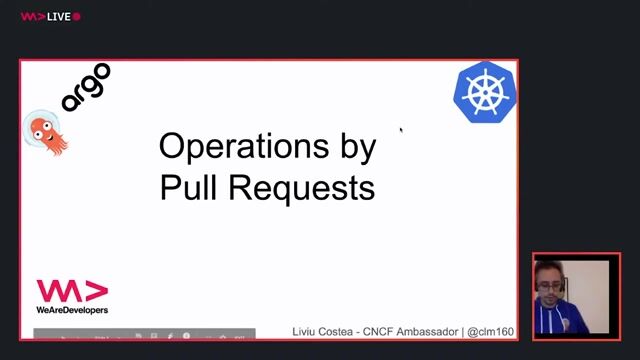
00:19 MIN
Introduction to GitOps and the talk agenda
Get ready for operations by pull requests

00:02 MIN
Understanding the fundamentals and benefits of GitOps
Securing secrets in the GitOps Era

28:41 MIN
Answering common questions about implementing GitOps
GitOps: The past, present and future
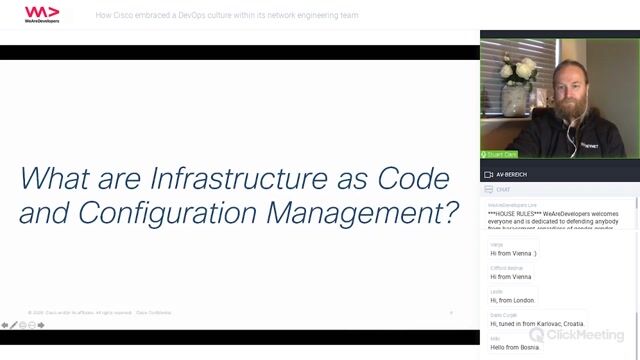
18:00 MIN
Applying GitOps principles to network automation
How Cisco embraced a DevOps culture within its network engineering team

28:30 MIN
Key benefits and principles of a true GitOps workflow
Everything as Code: A Dozen As-Code Concepts beyond Infrastructure or Configuration as Code

38:03 MIN
Q&A: Applying GitOps principles without Kubernetes
GitOps: The past, present and future
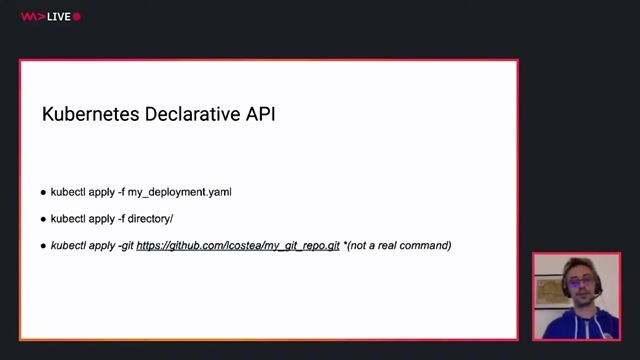
13:43 MIN
From imperative commands to declarative GitOps
Get ready for operations by pull requests
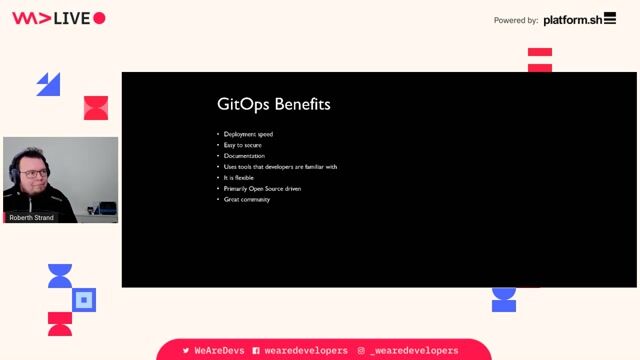
24:48 MIN
Overview of the GitOps workflow and popular tools
GitOps: The past, present and future
Featured Partners
Related Videos
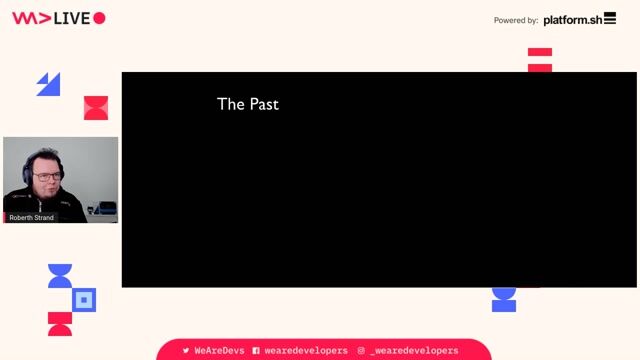 47:42
47:42GitOps: The past, present and future
Roberth Strand
 50:28
50:28Practical tips and tricks for CI/CD success
Zan Markan
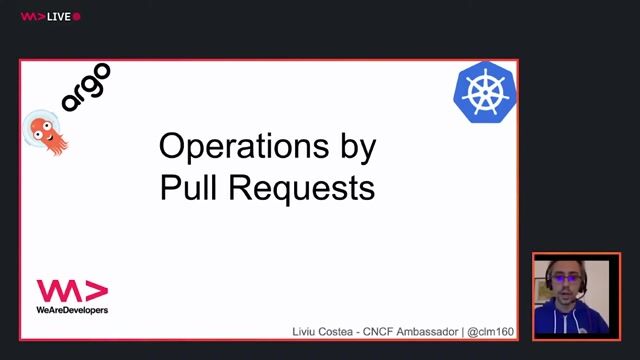 50:02
50:02Get ready for operations by pull requests
Liviu Costea
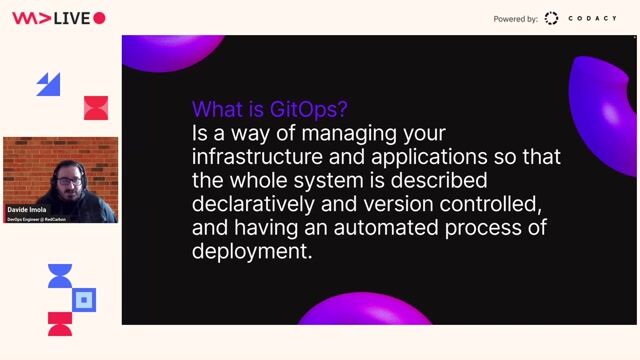 58:44
58:44How to GitOps your cluster with Flux
Davide Imola
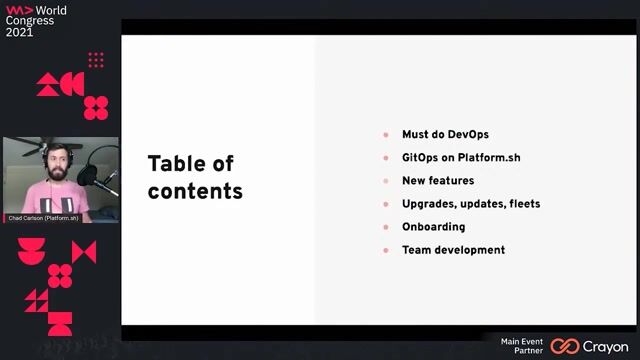 36:09
36:09GitOps keeps focus on apps, not on infrastructure
Chad Carlson
 29:49
29:49GitOps for the people
Lian Li
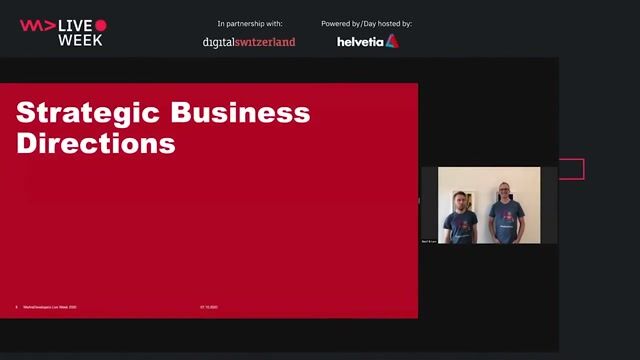 42:29
42:29Improving Developer Happiness with GitOps
Lars Hesel Christensen & Basil Brunner
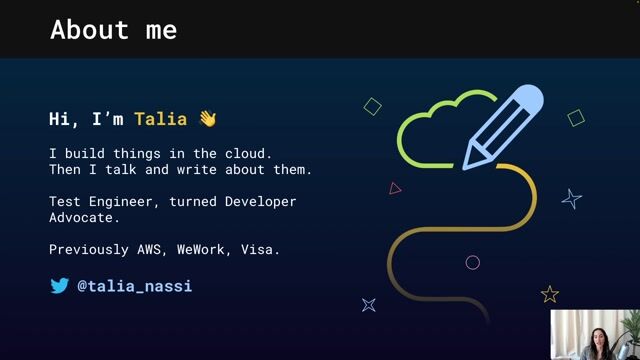 28:34
28:34Building Applications with Infrastructure as Code
Talia Nassi
From learning to earning
Jobs that call for the skills explored in this talk.

DevOps Engineer – Kubernetes & Cloud (m/w/d)
epostbox epb GmbH
Berlin, Germany
Intermediate
Senior
DevOps
Kubernetes
Cloud (AWS/Google/Azure)

Implementing DevOps Solutions and Practices using Cisco Platforms Schulung (DEVOPS)
Incas Gmbh
GIT
Bash
Linux
DevOps
Python
+3

Cloud Engineer (m/w/d)
fulfillmenttools
Köln, Germany
€50-65K
Intermediate
TypeScript
Google Cloud Platform
Continuous Integration

Senior DevOps Consultant (m/w/d)
AOK Systems GmbH
Bonn, Germany
Intermediate
Senior
Linux
DevOps
Kubernetes

SENIOR DEVOPS ENGINEER (M/W/D)
Wilken GmbH
Ulm, Germany
Remote
Intermediate
Senior
Azure
Gitlab
Terraform
Kubernetes

DevOps-Experte - CI/CD, Docker, Kubernetes. (gn)
Grafton Deutschland GmbH
Senior
GIT
Java
JIRA
Bash
Linux
+10


Dev Ops / Infra
Roots Energy GmbH
Vienna, Austria
Senior
Python
Docker
Terraform
IT Security
Continuous Integration
